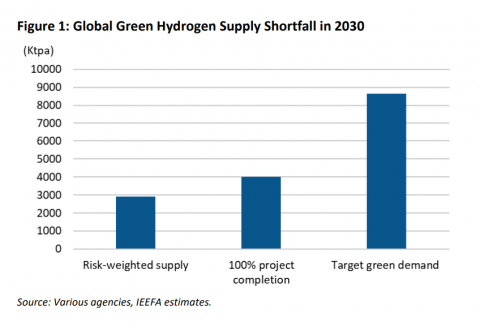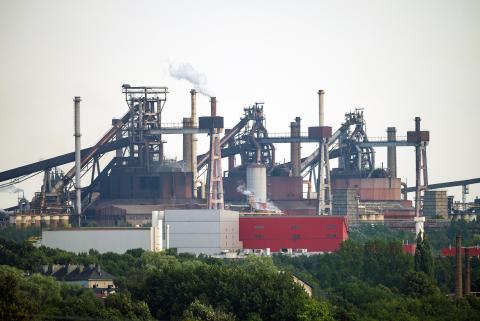Great expectations: Asia, Australia, and Europe leading emerging green hydrogen economy, but project delays likely
Download Full Report
View Press Release
Key Findings
The renewable rich green hydrogen industry is accelerating with 50 new projects announced in the last year, but the pace is not fast enough to meet global energy demand, with massive capital shortfalls and government inaction stalling start-ups.
The supply of global green hydrogen is likely to be only 3 million tonnes a year. Yet demand for green hydrogen has been forecast at 8.7 million tonnes a year by 2030, showing an incredible supply shortfall.
Executive Summary
In July 2020, the European Union unveiled its new Hydrogen Strategy, a visionary plan to accelerate the adoption of green hydrogen to meet the EU’s net-zero emissions goal by 2050. Combined with smaller-scale plans in South Korea and Japan, IEEFA believes this could form the beginnings of a global green hydrogen economy.
Green hydrogen, produced exclusively with renewable energy, has been acclaimed for decades, but ever lower solar electricity costs mean this time really is different. We expect the EU’s initiative to find strong support as the proposed investment of €430bn by 2030 places it in pole position to develop a world-class green energy manufacturing industry and provides a vital bridge for energy transition by repurposing existing ‘natural’ gas pipelines and fossil-fuel dependent ports. In the past year, numerous green hydrogen projects have been proposed, primarily in Asia, Europe, Australia.
We estimate there are 50 viable projects globally announced in the past year with a total hydrogen production capacity of 4 million tons per annum and renewable power capacity of 50 gigawatts (GW), requiring capex of US$75bn.
The pace of projects is accelerating, and we count five new projects announced in July and August 2020 alone, including:
- On 4 July 2020, Nikola Motor Company in the U.S. announced it had ordered 85 megawatts (MW) of alkaline electrolysers to support five of the world’s hydrogen fuelling stations.
- On 7 July 2020, a consortium of Air Products, ACWA Power and NEOM announced plans to build a green ammonia plant in Saudi Arabia powered by 4GW of wind and solar power, to produce 237,000 tonnes a year of green hydrogen.
- On 24 July 2020, NextEra Energy announced it was closing its last coal-fired power unit and investing in its first green hydrogen facility in Florida - a 20MW electrolyser to produce solar-powered green hydrogen.
- On 27 July 2020, Iberdrola and Fertiberia of Spain announced a partnership to develop an integrated hydrogen plant with 100MW of solar PV, a 20MWh lithium-ion battery system and a 20MW electrolyser.
- On 3 August 2020, the WESTKÜSTE100 consortium announced the construction a 30MW electrolyser at the Heide oil refinery in Hamburg.
Most of these 50 projects are at an early stage, with just 14 having started construction and 34 at a study or memorandum of understanding stage. Only two plants are operational in Asia, Japan’s Fukushima Hydrogen Energy Research Field (FH2R) and Brunei’s Advanced Hydrogen Energy Chain Association for Technology Development (AHEAD), and they are pilot plants with less than 1,000 tonnes a year of hydrogen production capacity.
We expect most of these projects will start in the middle of this decade, with largescale projects starting up in 2022-23 and 2025-26.
There is however a serious risk that some of these projects may not be undertaken because of still-unfavourable economics and/or a lack of financing. Project economics depend on factors such as a successfully scaled-up electrolyser and equipment industry and a substantial lowering of seaborne hydrogen transportation costs. These projects could also face delays due to uncertain financing and cumbersome joint venture structures.
The numerous projects announced so far are likely to be insufficient to meet demand projections.
In aggregate, we forecast global green hydrogen supply additions of only 3 million tonnes a year (Mtpa), significantly short of target global green hydrogen demand of 8.7Mtpa in 2030.

There is a considerable gap that remains towards meeting the large increase in projected hydrogen demand by 2030. More public-private efforts are necessary for green hydrogen supply to overcome the existing obstacles.
We conclude that there remains ample room for more hydrogen projects and that further policy support will be necessary to grow this nascent industry.
Please view full report PDF for references and sources.











